Modern Music Preserves Cultural Heritage for Future Generations

Cultural heritage implies a shared bond and belonging to a community. It represents our history and our identity; our bond to the past, to our present, and the future. Unlike heritage representing the passing down of money or property, cultural heritage is the idea of passing down culture, values, and traditions. Lyrics tie into the ideas of cultural heritage in order to help the younger generations to better understand historical events and keep the bond of the past steadfast for the future by preserving it within modern songs.
The culture of a place is well represented in their music by the genre and in the instrument being used. It is easy for the meanings of one’s favorite song to get lost in the excitement of playing it. Upbeat tempos and catchy tunes seem to distract from deeper and sometimes dark inspirations the song was based.
National anthems are a prime example of a country’s culture and values, as they are often based on struggles the country faced while fighting for their freedoms. Today these songs of fighting and war are sung before sporting events.
In the United States, the national anthem, ‘The Star Spangled Banner’, is sung before school, so younger generations can memorise it. However, due to the repetition and overplaying of the anthem during school and sporting events, it is easy for children to go through the motions without understanding the power behind the song and the culture created due to its existence.
During the War of 1812 against Britain, the song was inspired when the flag appeared over Fort McHenry during the Battle for Baltimore, and Francis Scott Key’s poem, ‘The Star-Spangled Banner’, took interest with the public. Due to the poem and later song, the flag began to be displayed as a symbol of national pride and unity. It is now culturally disrespectful to destroy a flag and refuse to sing the National Anthem, as they are both seen as cultural signs of honor and integrity.
Displays of cultural symbols within songs are not confined to the United States. Other countries utilise instruments and lyrics for inspiration for heritage within the country. Ireland’s national symbol, the Harp, represents influences from immigration and is a symbol of the culture.

The Irish Harp – A Symbol of …
The harp is heard within traditional Irish songs and is the emblem of Ireland. It can be found on passports, The Presidential Seal, official documents, Irish euro coins, and on the well known drink, Guinness. It is also a symbol of Celtic origins.
Years of immigration and invasion greatly influenced the history of Irish music. The Celtic Harp is said to be of Egyptian descent, and seeing the harp emblem everywhere is a reminder of the musical roots. The wire-strung instrument is also associated with the Gaelic ruling class. Before the Irish flag is what it is today, a green flag with a harp on it was flown. The harp flag was first flown in 1642 by Irish rebel leader Owen Roe O’Neill.
In Ireland, music traditionally acts as a way of storytelling. Heritage is learned through the lyrics as the story is portrayed, and rebel songs emit tales of the past. A rebel song is a folk song whose lyrics extol the deeds of factual events and participants (rebels) in any armed rebellion against the English, as the British were trying to enforce unwanted rule over Ireland.
Rebel music and rebel songs can be utilised to help one understand the struggles, hardships, and pride the Irish community had for their land. Younger generations who were fortunate to be born in a calmer time period can listen to the rebel songs and understand their elders and the heritage which allows them to live in the country they do today.
Music is influenced by the culture and society of a nation. Politics, society, and ethics play a key factor in inspiring musicians to create controversial compositions and demand the listener think about the world around them. Singers and songwriters inspire younger artists as they pave the way for new music. Irish bands like the Clancy Brothers help inspire other bands like the Dubliners and Wolfe Tones and later heavyweights like the Chieftains, the Pogues, and U2.
Before rebel songs in Ireland, protest songs in the United States were making leeway for future generations to have the courage to speak out on passionate and controversial topics.
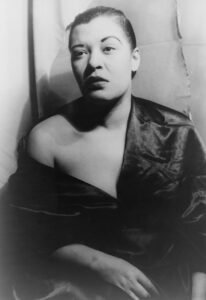
Billie Holiday
In the 1930s, Billie Holiday made musical debut with ‘Strange Fruit’ written for her during a time of lynching and racism.
“Southern trees bear a strange fruit
Blood on the leaves and blood at the root
Black bodies swinging in the southern breeze
Strange fruit hanging from the poplar trees”
‘Strange Fruit’ introduced the idea of a personal ode to protest while combining intellect with entertainment. Her slow, somber melody with chilling words opened the eyes of the audience she captivated as she peacefully brought attention to the controversy at hand.
The lyrics leave nothing to the imagination, and allow one to picture what the air would have smelled like and sights would have been had you been alive in the time period. It shows how the culture and customs have changed over the decades to allow a time of growth. Holiday paved the way of protest songs and inspires young artists still today and is shaping American life. By deeply affecting society and blowing up the tabloids as one of the first protest songs, Holiday is the reason future artists protest through lyrics.
Protest songs cover topics of female sexuality, black identity, and gay rights. In the most unexpected and instrumental ways, lyrics have helped shift the culture.
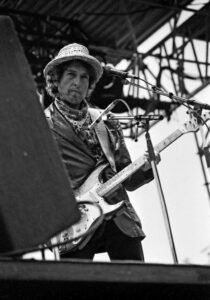
Bob Dylan Preforming Blowin’ in the Wind 1963
Bob Dylan took the protest genre by storm with his 1963 release of ‘Blowin’ in the Wind’. The song talks about civil rights and became a national sensation when it was played at the Lincoln Monument before Martin Luther King Jr.’r “I Have a Dream” speech.
“How many roads must a man walk down
Before you call him a man?
How many seas must a white dove sail
Before she sleeps in the sand?
Yes, and how many times must the cannonballs fly
Before they’re forever banned?
The answer, my friend, is blowin’ in the wind
The answer is blowin’ in the wind”
The song asks rhetorical questions regarding peace, war, and freedom. With WWII, Korean War, Vietnam War, and Civil Wars happening in the world back to back, Dylan was protesting and trying to have the audience think about and discuss his questions. “The answer is blowin’ in the wind” is stated to say the ideas of peace and freedom are being contemplated but not decided on and resolved as the ideas are blowin’ in the wind and being knocked around.
Dylan was joined by other artists like Marvin Gaye in a protest song about peace, freedom, and resolving the war. ‘What’s Going On’ by Marvin Gaye was a protest against the Vietnam War. Moving forward to 2004, Green Day took the stage with their protest against politics.
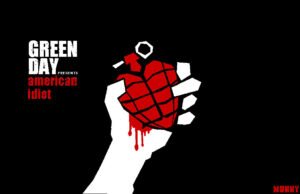
The 2004 hit was released as George Bush and John Kerry were competing for the post-9/11 White House. The song was pivotal, as it was the first time the band and song writer, Dusty Henry, openly discussed politics and realised they all did not agree. The album was then based on those ideas.
“Well maybe I’m a faggot american
I’m not part of the redneck agenda
Now everybody do the propaganda
And sing along to the age of paranoia”
Any time politics are discussed or a difference in opinion arises, controversy and negativity follows. After the tragedy of 9/11 the United States was out for revenge, and social media was at the front lines. As the song states, one nation controlled by the media is a tie into how the negative news about a traumatic incident was leading society into an aggressive mindset while presidential campaigns were running. The propaganda of campaigns brought on paranoia for the presidency and revenge for the injustice of 9/11.
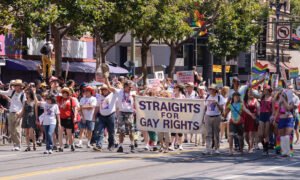
Gay rights became the focus of Macklemore and Ryan Lewis ft. Mary Lambert’s 2013 release, “Same Love”. The Seattle Duo released their pro-gay anthem at a pivotal point in the fight for gay rights explaining what it is like to be a homosexual in a straight world. The song states “I can’t change. Even if I tried,” to try and explain a person does not choose to be gay but are born into it. It is who they are and it is not possible to flip a switch and turn it off no matter what laws are put into place.
Protest songs, such as the ones above, are a way to see the heritage of a country and learn about cultural changes. Younger generations living in the present can learn a lot about society and their personal heritage by listening to the songs created before their time. Hearing about lynching, war, civil rights, and gay rights in the United States through song by artists who expressed themselves allows for a deeper understanding and conection to history.
Where the U.S. mastered music as a way of peaceful protesting, Ireland utilised their musical heritage to maintain autonomy during periods of struggle.
In an article by Kate Beaudoin, Musicologist, Helen O’Shea wrote the Irish hold onto authentic Irish music in order to keep the national identity together stating the music is the greatest achievement. Irish protest songs reach in the thousands due to a long history of injustice and resisting conquer.
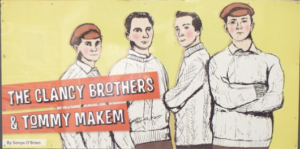
Within the musical realm, The Clancy Brothers helped inspire and direct young Irish groups and artists like Bob Dylan gain a confident enough musical bedrock to support lasting heavyweights such as the Chieftains, the Pogues, and U2.
The 1970s brought forth a new era as the Rock scene was beginning to grow. Rock provided the use of new instruments and incorporated unique sounds different from the traditional Irish folk music. U2, an Irish rock band from Dublin, was formed in 1976 and consisted of Bono, the Edge, Adam Clayton, and Larry Mullen Jr.

U2 wrote “Sunday Bloody Sunday” a decade after the violent events of Jan. 30, 1972, when British soldiers fired on a civil rights march, killing 14 civilians.
The story behind the song was the first to address these events musically. John Lennon openly expressed his anger towards these events and stated on stage the song is not a rebel song in order to clear the air about misinterpretations. Lennon openly expressed his political points of view and wanted people to hear the song and think about what happened during the massacre.
“Sunday Bloody Sunday” transports listeners back to the time of war. It is from the perspective of an observer to the events and is left in shock from the horrific events. The song ends by stating fighting with each other is not the way to go, but instead, victory must be claimed.
Music allows artists to peacefully take a stand on issues they feel passionate about. By preserving the songs, younger generations are able to utilise those pieces of art to learn about the cultural history of their heritage. Music paves the groundwork for expression, cultural movements, and political changes within a society. The shared bond and belonging to a community comes through lyrics of songs as the listener is able to understand and emotionally connect to the story being told. Musical genres and instruments may change over time, but understanding, preserving, and looking upon music through the decades allows connection and understanding within the culture.
Listening to the lyrics of modern and older songs embodies the passing down of culture, values, and traditions. Stories told through songs show the values of the artist and the time period. Stories told in the 1930s are not the same ones being told in 2021. Lynching is in the past but can still be understood and treasured as a part of what society used to be like. Cultural heritage is part of the past, the present, and will continue in the future as Modern song lyrics help younger generations understand historical events and the struggles faced in order to keep the bond of the past ongoing.